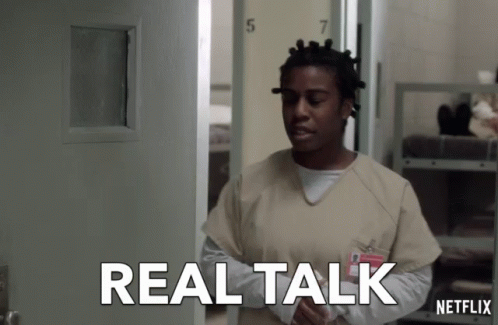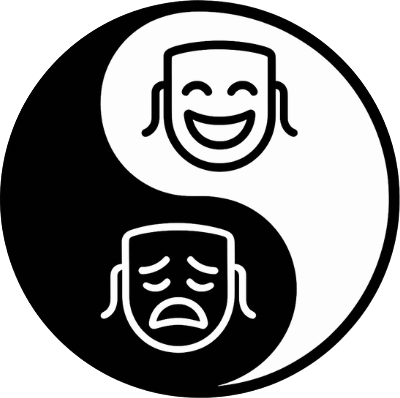Talk That (Self-)Talk
If you've been following along lately, you may have noticed the Dojo is on a bit of a mission. From our bigger picture pieces on making peak performance and peak experience concrete, to our more detailed posts on specific tools (e.g., preparatory routines and mental rehearsal), the Dojo is in its let's 👏 proper 👏 move 👏 the 👏 needle 👏 era. Actors need access to the same wealth of psychological skills training as athletes, dancers, and musicians. Period. "Performance psychology" can't hand-on-heart call itself "performance psychology" until it includes actors, too.
Similarly, no discussion of OG psychological skills training would be complete without mention of self-talk, which is what this article will cover. But before we get there, we must be responsible little researchers and flag the caveat we'll continue to flag: OG psychological skills training don't seem to be the most effective means of enhancing objective performance.[1] This doesn't mean they don't – they just seem to be less effective than other means, such as mindfulness- and acceptance-based modalities.[2] This also doesn't negate the fact that OG psychological skills training can materially enhance subjective experience (e.g., attentional control,[3] emotion regulation,[4] and levels of motivation[5]), which alone is awesome. Still, it's a caveat we must caveat because clarity is kindness. Accuracy is nice, too.
Groovy? Great. To the tactical-practical!
Backed by science; built for the stage and screen.
👊 Actors:
Get evidence-informed insights and strategies to support your performance and well-being. Join the Dojo e-newsletter tribe and make thriving your reality.
🧭 Drama schools & Production companies:
Bring pioneering, research-backed coaching into your classroom or rehearsal room. Let's talk about supporting your actors to perform at their peak – and stay well in the process.
Talking the talk
Let's start with a definition. Self-talk may sound painfully self-explanatory, but there are actually quite a few layers to the concept. Sure, at its most foundational level, self-talk is any linguistic content we direct toward ourselves. But, for instance, this linguistic content can be:
- Internal or out loud.
- Automatic or very strategic.
- "Positive" or "negative".
- Instructional (e.g., "Relax the belly"[6]) or motivational (e.g., "LET'S GO!"[7]).[8]
Most of us engage in self-talk most of the time, but the particular flavour will vary from person to person and context to context.
In performance settings, research has demonstrated a moderate effect size for self-talk as a performance- and experience-enhancing tool,[9] especially its positive, instructional, and motivational flavours.[10]
Walking the talk
When it comes to walking the walk, the Dojo thinks about employing self-talk in two overarching ways: as an actor, and while acting.
As an actor, positive, motivating self-talk can be a lifeline in the time leading up to a performance, whether days (e.g., the week of a big-time audition) or minutes (e.g., in the moments before curtain up). We say "can" because research has shown that not everyone responds best to positive, motivational self-talk.[11] [12] However, research also reminds us that performing artists tend to be on the receiving end of frequent subjective judgments.[13] If these subjective judgments are interpreted as negative, we can quickly slide into shaming self-talk and a loss of self-confidence, which in turn, can exacerbate mental health challenges and lead to "maladaptive coping strategies (i.e., alcohol, drugs, and risk-taking behavior)".[14] Fun! All this to say, if a little positive, motivational self-talk keeps us out of the sewer spiral, it's worth adding to our preparatory routines.
On the acting side, positive, instructional self-talk can help us better assimilate and remember direction while rehearsing.[15] As a perhaps silly example, a cinematographer once needed me to run in a very specific arc to work with the cut they had planned. The path he was describing reminded me of a banana (😅), so, in the test takes beforehand, I used the cue "banana" to enact his direction. I didn't need to consciously cue myself in the actual takes, but my subconscious and muscle memory had definitely wired "banana" in.
This latter point is potentially critical. Peak performance or "flow" states are typically characterised by reduced mental chatter, including self-talk.[16] Meaning, when we're in the midst of performing, we're best to attend to the present moment and focus on our task rather than ourselves. However, if we find we've slipped out of the present moment slipstream, a short, sharp, positive, instructional cue like "task", "breath", or "here" can help us find our flow again.
Across both actor and acting contexts, though, we'll want to work with what works for us – the special little snowflakes we are. As we're likely to already be engaging in some form of self-talk anyway, poke around to see what frame and format this tends to take, and how well it's working.[17] If it's doing you just fine at this moment in time, magic. If it isn't, play with the dimensions outlined above (e.g., internal / out loud, instructional / motivational), and see whether you can unlock a better combination for yourself. Remember, optimal self-talk varies from person to person and context to context, so this is a practice of empowering you to empower yourself in any performance situation you encounter 👊

In the same way we have an array of tools for acting, let's have an array of tools for being an actor. We don't need to use them all or all at once, but we do deserve to be equipped to thrive as people, not just as performers.
Love what you're reading? Help us keep it flowing. Donations support the research, writing, and free sharing of evidence-informed tools for actor performance and well-being. Every dollar fuels our mission to make thriving a reality for actors everywhere 🔥
Citations
[1] https://doi.org/10.1007/s12671-019-01098-7
[2] https://doi.org/10.1123/jcsp.3.4.320
[3] https://doi.org/10.1016/j.copsyc.2017.05.014
[4] https://doi.org/10.3390/sports7060148
[5] https://pubmed.ncbi.nlm.nih.gov/32874104/
[6] [7] [9] [15] https://doi.org/10.1177/1745691611413136
[8] [11] https://doi.org/10.4324/9781315777054 (pp. 449–459)
[10] https://doi.org/10.1123/jsep.33.5.666 (p. 666)
[12] https://doi.org/10.33545/26647559.2023.v5.i2a.80
[13] [14] http://dx.doi.org/10.1037/cpb0000127 (p. 102)
[16] https://doi.org/10.3389/fpsyg.2021.645498 (p. 1)
[17] https://doi.org/10.4324/9780203851043_chapter_53 (p. 516)
Cite us!
IG: @theactorsdojo
APA 7: Norrish, T. (2025, August 17). Talk that (self-)talk. The Actor’s Dojo. https://www.dojoactors.com/self-talk/
